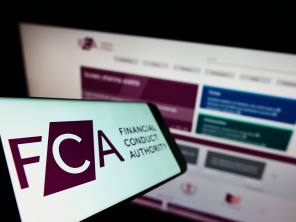

US smaller companies funds remain a fairly niche asset class but a track record of solid returns may spur more interest from UK investors.
Small caps are typically perceived by investors as a riskier investment when compared to the seeming stability of large-cap companies, which often provide a steady income stream.
But investors are missing out if they choose not to be invested in North American small-cap funds. According to FE Analytics, the average return from the IA North American Smaller Companies sector over 10 years to October 12 is 194 per cent, while the IA North America sector, with funds that are generally invested further up the market-cap scale, delivered an average 149 per cent return.
Even over the past 12 months to October 12 the average return from the smaller companies peer group is 31.5 per cent, compared to the average return of 29.5 per cent generated by the IA North America sector. In the 12 months to October 12, the S&P 500 index was up 35.6 per cent in sterling terms, with the MSCI USA Small Cap index only just behind having gained 34.3 per cent.
But figures from the Investment Association show investors are not convinced, with the North American Smaller Companies sector only notching up three months of positive net retail sales figures in the past 13 months.
It could be the upcoming US presidential election is making investors nervous. Perhaps they feel small companies have more to lose from the election of a new president.
Nicolas Janvier, co-manager of the Threadneedle American Smaller Companies fund, believes this is playing on investors’ minds.
“In the near term, the key question for investors is how the market will react to the outcome of the US election,” he notes. “While we are not positioning portfolios for a particular outcome ahead of the result, we have been very active in our scenario analysis for different industries. We will be looking for attractive opportunities that the market may present as the new US political landscape becomes clear.”
US equities are also perceived to be expensive at the moment on several measures, including price to book. As Guy Stephens, of Rowan Dartington Signature, points out: “There are many investors who cashed out ahead of the Brexit vote and have now foregone returns of over 12 per cent on the FTSE 100 [index] or over 21 per cent on the S&P 500 [index]. These same investors are also likely to remain in cash ahead of the US election as that is seen as another catalyst for weakness.
But he adds: “To invest today and believe the pollsters with regard to Hillary Clinton winning when the Brexit polls were so wrong, would appear speculative and foolhardy to most.”
Mr Janvier is more optimistic on the outlook for US-based smaller companies. He says: “Looking further ahead, we expect the smaller companies market to continue to offer premium growth relative to many other asset classes.
“Indeed, the US economy may provide some relative shelter to investors in an uncertain global growth environment. If history is a guide, then the earnings power of smaller companies and alpha opportunities we find in the market can continue to benefit investors into 2017 and beyond.”



